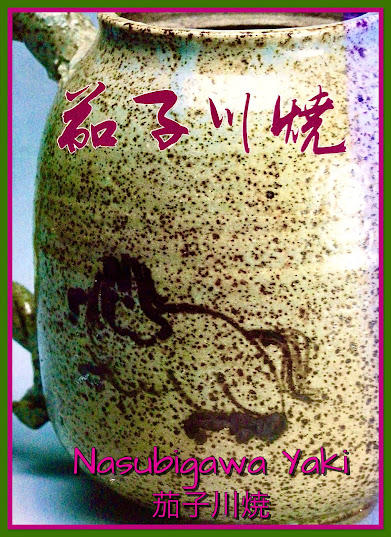An edited rough translation of a marker by Sakamoto District Cultural Heritage Preservation Society.

You are invited to come along with me as I learn about Japanese ceramics. I will share what I learn about the kilns, history, terminology, potters, decorators, styles, and marks. This is a work in progress. ** NOTICE: I DO NOT ANSWER QUERIES ON PERSONAL PIECES. I DO NOT GIVE VALUATIONS. General comments and questions will still be accepted.
Sunday, November 6, 2022
NASUBIGAWA YAKI (茄子川焼)
An edited rough translation of a marker by Sakamoto District Cultural Heritage Preservation Society.
Thursday, November 3, 2022
KOKUJI YAKI (小久慈焼)-Ceramics of Iwate Prefecture
Kokuji Yaki originated in northern Iwate. By the mid 20th century it was on the verge of distinction because there were no successors to the kilns. Mr. Shimodake Takeshi went to study ceramics in Seto. He returned to the area and with Mr. Kumagai Ryutaro established an association to help train potters to revive the area ceramics industry.
Featured Post
Helpful Vocabulary When Researching Japanese Ceramics
Vocabulary when searching for Japanese Ceramics *I will be adding to this list Dating ( 江戸) Edo Period (1603-1868) (江戸 前期) Ea...
-
From 1921-1941, wares from Japan exported to the United States had to be marked "Japan" or "Made in Japan". During Wor...
-
The This company was in business from 1954-1994. It was bought out by Enesco in 1994. Registered in NYC and San Francisco. Recognized by it...
-
Kutani ware is from Ishikawa Prefecture. The markings are often in red, but can be impressed, in blue, gold and sometimes black with a g...




